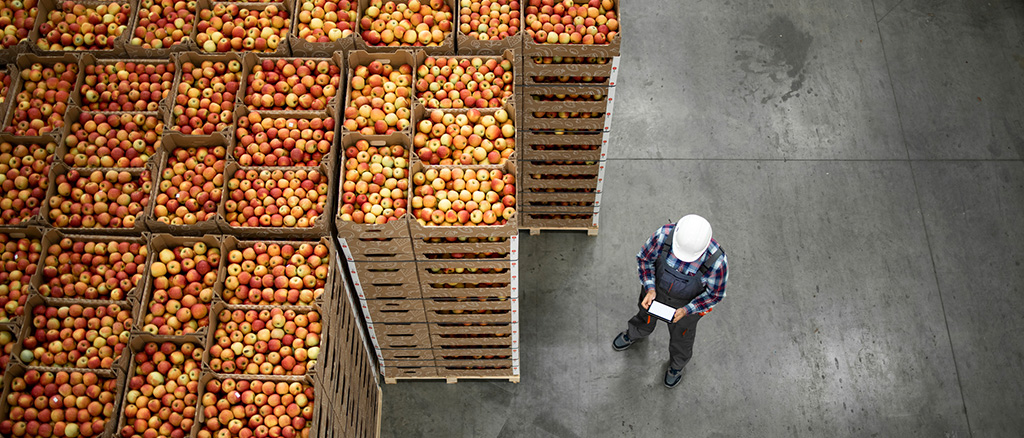Food Storage & Processing

Check out our free Buyer’s Guide and learn how low or fluctuating humidity can negatively affect food storage and processing facilities.
Humidity control in commercial food storage and processing facilities helps preserve food product quality, safety, and shelf life. Proper humidity management is essential in any type of food storage setting, including restaurants, grocery stores, warehouses, and food processing facilities.
Issues caused by uncontrolled humidity
Controlling the relative humidity (RH) within commercial food storage locations and processing facilities helps reduce food spoilage and safety risks, protect food quality and equipment, and maintain better control over operational expenses. Businesses in the food industry should prioritize humidity control to mitigate these problems and ensure the integrity of their food products.
Many food safety regulations require businesses to maintain specific humidity conditions in food storage areas. Failure to comply with these regulations can result in legal and regulatory issues, including fines and penalties.
Relative humidity levels that are too low or too high can cause the following issues in food storage and processing applications:
- Shortened shelf life: Uncontrolled humidity can lead to accelerated moisture loss or excessive moisture accumulation in food products, causing them to spoil or deteriorate quickly. This results in reduced shelf life and increased food waste.
- Food safety risks: In environments with unregulated humidity, harmful bacteria, molds, and pathogens can thrive, posing significant safety risks. Contaminated food can lead to foodborne illnesses and consumer health hazards.
- Degraded food quality: Fluctuating humidity levels can cause changes in the texture, flavor, and appearance of food products. For example, vegetables may become wilted, bread may become stale, and meats may lose moisture and tenderness.
- Equipment damage: High humidity levels can cause corrosion, rust, and mold growth on food storage equipment, refrigeration systems, and infrastructure. This leads to increased maintenance and replacement costs.
- Inefficient energy usage: Uncontrolled humidity can force refrigeration systems to work harder to maintain proper temperature conditions. This results in higher energy consumption and increased operational costs.
- Inconsistent food quality: Fluctuating humidity levels can result in inconsistent food quality, negatively impacting the taste and appearance of menu items or food products, leading to customer dissatisfaction, negative reviews, and a decrease in repeat business, harming a food-related business’s reputation and profitability.
- Increased operational expenses: Uncontrolled humidity can lead to higher operational costs due to food waste, energy inefficiency, and the need for more frequent equipment maintenance and repairs.
Resources
Buyer’s Guide: Humidity Control for Food Storage
Learn how issues caused by low or fluctuating humidity levels can negatively affect both operations and products in food storage and processing facilities, creating the potential for issues with food product quality, safety, and shelf life.
The Commercial Storage of Fruits, Vegetables, and Florist and Nursery Stocks
Guidelines from the USDA with summaries of current storage requirements of fresh fruits, vegetables, cut flowers, and other horticultural crops.
Next steps
Contact your local DriSteem representative to learn more about humidity control for commercial food storage and processing. Use the Find a Rep tool below to find your nearest representative.
Connect with a humidity control expert
Already using humidity control to protect commercial food storage and processing facilities?
For best performance and highest efficiency, existing humidification systems should be checked to determine if any replacement parts are needed, if any other maintenance needs to be performed, and whether there is a software update available. Contact your local DriSteem representative to learn more.
